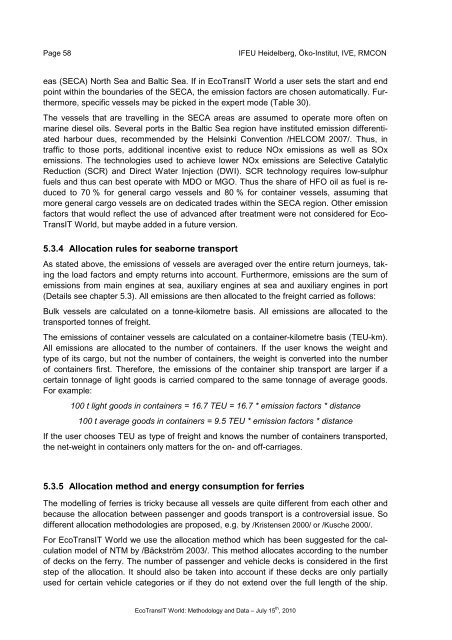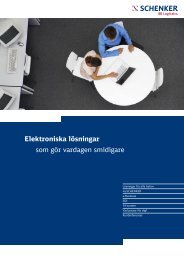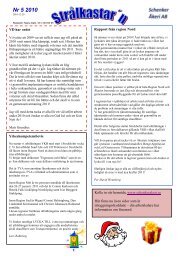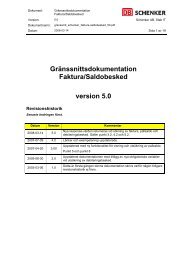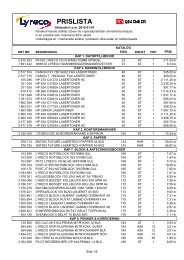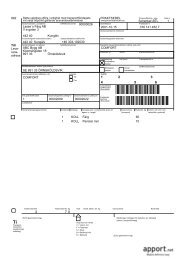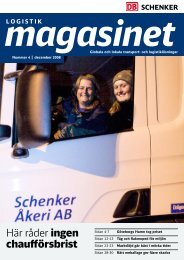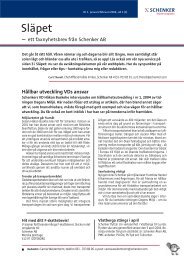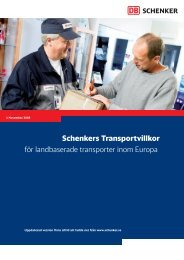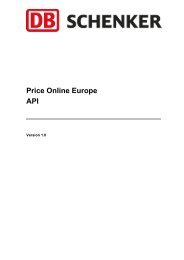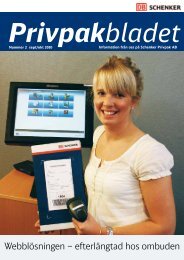Ecological Transport Information Tool for Worldwide ... - Schenker
Ecological Transport Information Tool for Worldwide ... - Schenker
Ecological Transport Information Tool for Worldwide ... - Schenker
You also want an ePaper? Increase the reach of your titles
YUMPU automatically turns print PDFs into web optimized ePapers that Google loves.
Page 58<br />
IFEU Heidelberg, Öko-Institut, IVE, RMCON<br />
eas (SECA) North Sea and Baltic Sea. If in EcoTransIT World a user sets the start and end<br />
point within the boundaries of the SECA, the emission factors are chosen automatically. Furthermore,<br />
specific vessels may be picked in the expert mode (Table 30).<br />
The vessels that are travelling in the SECA areas are assumed to operate more often on<br />
marine diesel oils. Several ports in the Baltic Sea region have instituted emission differentiated<br />
harbour dues, recommended by the Helsinki Convention /HELCOM 2007/. Thus, in<br />
traffic to those ports, additional incentive exist to reduce NOx emissions as well as SOx<br />
emissions. The technologies used to achieve lower NOx emissions are Selective Catalytic<br />
Reduction (SCR) and Direct Water Injection (DWI). SCR technology requires low-sulphur<br />
fuels and thus can best operate with MDO or MGO. Thus the share of HFO oil as fuel is reduced<br />
to 70 % <strong>for</strong> general cargo vessels and 80 % <strong>for</strong> container vessels, assuming that<br />
more general cargo vessels are on dedicated trades within the SECA region. Other emission<br />
factors that would reflect the use of advanced after treatment were not considered <strong>for</strong> Eco-<br />
TransIT World, but maybe added in a future version.<br />
5.3.4 Allocation rules <strong>for</strong> seaborne transport<br />
As stated above, the emissions of vessels are averaged over the entire return journeys, taking<br />
the load factors and empty returns into account. Furthermore, emissions are the sum of<br />
emissions from main engines at sea, auxiliary engines at sea and auxiliary engines in port<br />
(Details see chapter 5.3). All emissions are then allocated to the freight carried as follows:<br />
Bulk vessels are calculated on a tonne-kilometre basis. All emissions are allocated to the<br />
transported tonnes of freight.<br />
The emissions of container vessels are calculated on a container-kilometre basis (TEU-km).<br />
All emissions are allocated to the number of containers. If the user knows the weight and<br />
type of its cargo, but not the number of containers, the weight is converted into the number<br />
of containers first. There<strong>for</strong>e, the emissions of the container ship transport are larger if a<br />
certain tonnage of light goods is carried compared to the same tonnage of average goods.<br />
For example:<br />
100 t light goods in containers = 16.7 TEU = 16.7 * emission factors * distance<br />
100 t average goods in containers = 9.5 TEU * emission factors * distance<br />
If the user chooses TEU as type of freight and knows the number of containers transported,<br />
the net-weight in containers only matters <strong>for</strong> the on- and off-carriages.<br />
5.3.5 Allocation method and energy consumption <strong>for</strong> ferries<br />
The modelling of ferries is tricky because all vessels are quite different from each other and<br />
because the allocation between passenger and goods transport is a controversial issue. So<br />
different allocation methodologies are proposed, e.g. by /Kristensen 2000/ or /Kusche 2000/.<br />
For EcoTransIT World we use the allocation method which has been suggested <strong>for</strong> the calculation<br />
model of NTM by /Bäckström 2003/. This method allocates according to the number<br />
of decks on the ferry. The number of passenger and vehicle decks is considered in the first<br />
step of the allocation. It should also be taken into account if these decks are only partially<br />
used <strong>for</strong> certain vehicle categories or if they do not extend over the full length of the ship.<br />
EcoTransIT World: Methodology and Data – July 15 th , 2010


